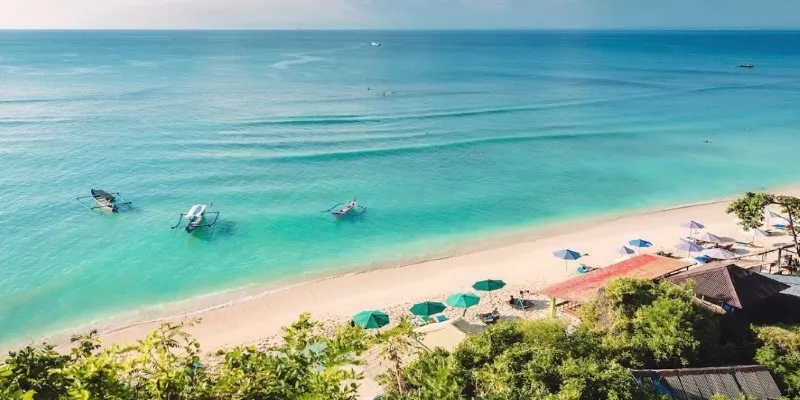Unveiling Bali’s Jatiluwih Rice Terraces: A Visitor’s Insightful Guide
In the heart of Bali, the “Jatiluwih Rice Terraces” present a stunning panorama where nature, culture, and history converge beautifully. This rice terrace area, located in the central part of the island, stretches out to form a vibrant green landscape across the hillsides. As part of the UNESCO World Heritage site, the Jatiluwih Rice Terraces signify the traditional way of farming that has defined the identity of this Indonesian island for centuries.
Visiting this area is not only about enjoying a picturesque view but also stepping into a living history that continues to thrive. This guide covers all aspects, from practical tips to historical insights, ensuring you fully enjoy the beauty and significance of the Jatiluwih Rice Terraces.
The Rich History of the Jatiluwih Rice Terraces
The Jatiluwih Rice Terraces are not only a lovely spot but also embody Bali’s ancient agricultural system known as Subak. This cooperative irrigation technique, dating back to the 9th century, is integral to rice fields on the island. What you see today is a result of this sustainable practice, balancing the needs of the land, water, and community. Subak is founded on principles of equality and mutual benefit, where farmers work harmoniously to manage water resources, ensuring all fields are well-irrigated.
This cooperative system has been so influential that it earned the Jatiluwih Rice Terraces a spot on the UNESCO World Heritage list in 2012. The recognition emphasizes the terraces not only as a natural wonder but also as an example of human ingenuity in maintaining harmony with the environment. It’s easy to see why visitors are drawn to this place; there is a profound connection between the land and the people that transcends generations.
Exploring the Jatiluwih Rice Terraces
The Jatiluwih Rice Terraces immediately display the panoramic beauty of the landscape. The extent of these terraces stretches as far as the eye can see, creating a harmonious view of endless rice fields. The area is vast, allowing visitors to explore by foot or bicycle along its many paths. Farmers can be seen tending to the rice crops and performing traditional maintenance on the fields.

Perhaps the best way to experience the terraces is by leisurely walking up the trails that weave through the paddies. These trails offer views of the intricate irrigation system that has sustained Bali’s rice-farming culture for centuries. The paths lead past rice fields, small temples, and family shrines, providing opportunities to pause and appreciate the beauty around you.
The elevated viewpoints in the area provide perfect photo opportunities, capturing the vastness of the terraces and the surrounding mountains in the distance. Sunrise and sunset are particularly magical times to visit, as the golden light bathes the fields in a warm glow. The quiet stillness of the mornings, before the fields come alive with activity, is a peaceful experience cherished by many visitors.
The Spiritual Significance of Jatiluwih
Bali is often described as a spiritual destination, and the Jatiluwih Rice Terraces embody this connection to the island’s spiritual roots. As you walk through the terraces, you’ll notice several small temples nestled among the fields. Local farmers use these temples for offerings and rituals to ensure a bountiful harvest. The Hindu influence on Balinese culture is evident here, where every aspect of life, including agriculture, is intertwined with religious practices.
The Balinese believe their connection to nature is sacred, and the Subak system itself is a form of spiritual practice. Water, in particular, is considered sacred, as it nourishes both crops and people. The temple rituals performed by the farmers are a way of showing respect to the gods and asking for their blessings. This deep spiritual connection between the land and the people adds an extra layer of meaning to your visit, making it not just a visual feast but a cultural journey as well.
What to Do Around the Jatiluwih Rice Terraces?
While the Jatiluwih Rice Terraces are the main attraction, there are plenty of nearby activities to create a well-rounded visit. If you’re interested in Bali’s natural beauty, explore several hikes and treks in the surrounding mountains, offering panoramic views of both the rice fields and distant volcanoes. A popular hike is Mount Batukaru, Bali’s second-highest volcano, which is just a short drive from the terraces.

For a more cultural experience, visit the nearby village of Jatiluwih. Here, you can interact with the locals and learn about the traditional farming lifestyle that continues to thrive in the region. The village features small shops selling locally made crafts and products, perfect for picking up a souvenir or two. The area is also known for its cool climate, providing a refreshing escape from Bali’s more humid coastal regions.
If you enjoy local cuisine, stop by one of the many restaurants in the area that serve traditional Balinese dishes. Freshly prepared rice dishes are often the highlight, allowing you to taste the fruits of the farmers’ labor. Many of these eateries offer stunning views of the rice fields, letting you enjoy a meal while taking in the landscape.
Conclusion
The Jatiluwih Rice Terraces are more than just a beautiful part of Bali’s landscape; they are a living cultural and historical landmark. From the intricate, centuries-old Subak irrigation system to the serene walkways through the emerald fields, this area offers a rare opportunity to connect with Bali’s agricultural heritage. Whether you’re visiting for stunning views, to learn about traditional farming practices, or simply to escape into nature, Jatiluwih promises a memorable experience.


